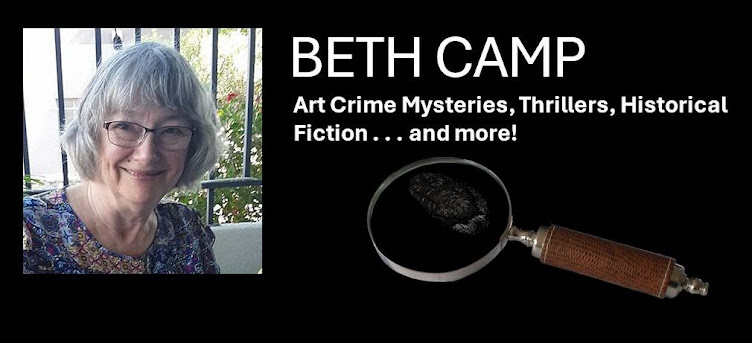 Dead Men Don't opens as Andi Merritt, sheltered daughter of a mob underboss, is kidnapped only to discover that her father has sold her to a Middle Eastern oil baron’s harem to pay off his gambling debts. Fighting her sense of helplessness, Andi struggles to escape.
Dead Men Don't opens as Andi Merritt, sheltered daughter of a mob underboss, is kidnapped only to discover that her father has sold her to a Middle Eastern oil baron’s harem to pay off his gambling debts. Fighting her sense of helplessness, Andi struggles to escape. That’s how she meets Levi Komakov, ex-CIA black ops expert, who kicks down a door to save her. Nicknamed the ‘Ghost,’ Levi works on special missions; his team pulled from unlikely places within the organized crime community, the CIA, and the police.
This thriller/romance/adventure story sizzles with action in diverse settings -- a secluded, well-guarded estate, a remote mountain cabin, headquarters of a crime family, and a harem in a desert palace, all believably created. Pepper’s characters ring true, and we learn a good bit of information about self-defense for women as well as how to prepare for a black-ops mission, planning, weapons, fight strategies and explosives.
Levi exemplifies a curious set of ethics; he’s committed to protecting those he serves and loves; yet, he’s not afraid to take action outside the law or to commit murder, when the crime is heinous. All in keeping with the title: Dead Men Don't. In a very interesting way, O’Neal has written a story about strong women as much as the strong men who love them and protect them.
Fans are ready for the next book in the series, neatly introduced in Dead Men Don't at the very end as an old friend calls Levi for help. Can Jack, a footloose and free-spirited former Navy SEAL, help Jordan, the grandniece of Levi’s employer, solve the mystery of race-horses dying from no known cause?
A personal note from Pepper O'Neal
I met Pepper the first time I attended a Willamette Writers conference in Portland, Oregon. Her fiery red hair and outgoing personality mirror her heroines! Pepper answered a few questions for today's release:
1. How would you describe your genre? Why do you write this genre? I’d call it romantic thrillers, and I write it because I’m too much of an adrenalin junkie to write standard romance.
2. Which is your favorite book you've written so far -- and why? In this series, it would have to be this one, Dead Men Don’t. In my paranormal series it would Blood Fest: Cursing Fate.
3. How do you fight off writer's block -- if you've experienced it? Yeah, I experience it all the time, and I fight it by writing whatever pops into my mind. I tell myself, it’s just the first draft, so type something and move on. I might have to delete a lot of it later, but it gets me past the block.
4. What advice would you give to a writer starting out? Finish the novel! I know so many ‘wanna be’ authors who have half a novel they polish over and over. You’ll never publish half a novel, so finish it before you start polishing.
5. Do you think writers should self-publish? Why or why not? I am hesitant to self-publish because so many authors did so without proper editing and it gave self-publishing a bad name. But lots of authors do it and do well at it. I am not really qualified to format and all that other stuff self-publishers have to do. So I don’t think it’s for me. But as I say, I know a lot of authors who do well at it.
6. What has been your best "aha" moment in writing? I think it was when I realized that I had to finish a novel before I could publish one. Now I do my entire first draft before I start polishing.
7. Your covers are amazing. How were they created? The first three I had an artist friend, Dawne Dominique, do, but this time I decide to try my hand at it, and I did this one myself. It was fun.
Thank you, Pepper, for visiting the blog today -- and congratulations on your new release!
Connect with Pepper O'Neal on her website at
www.pepperoneal.com/ or check out her books on Smashwords or GoodReads or Amazon









